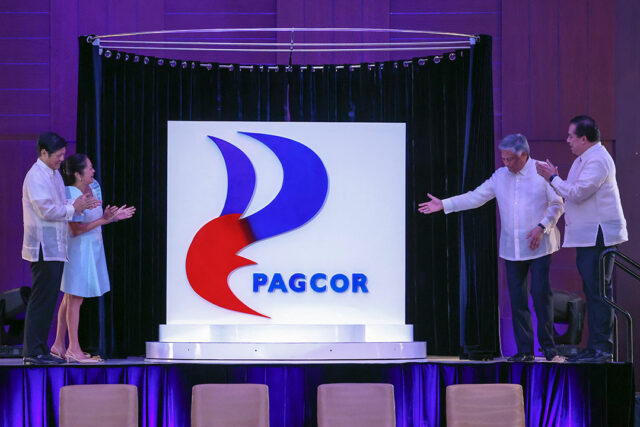On Dec. 10, the Department of Finance approved and issued the Implementing Rules and Regulations (IRR) of Republic Act No. 12001, otherwise known as the Real Property Valuation and Assessment Reform Act (RPVARA). RPVARA seeks to promote just, equitable, and nationally consistent real property valuation based on international standards, adopting market value as a single base for real property valuation for tax assessment and other transactions. It also aims to promote fiscal autonomy by enhancing the local government units’ (LGUs) capacity to generate revenue from real property and foster transparency and innovation through the provision of a comprehensive and up-to-date electronic database of all real property transactions.
Real property is one of the most valuable and reliable assets a person can own. Not only does it provide financial security, but it also protects a person’s purchasing power from inflation due to the general tendency of real property to appreciate over time. Real property also provides the opportunity to create a legacy by passing it on to future generations. Evidently, the recent implementation of the RPVARA will have an impact on the value of a person’s real property. The recent signing of the IRR affords us the opportunity to look more deeply into the IRR. Below are the salient provisions of the law and IRR.
SALIENT PROVISIONS
A.Role of the BLGF and the creation of the Real Property Valuation Service (RPVS)
The RPVARA designates the Bureau of Local Government Finance (BLGF) as the primary agency to implement the law. To accommodate the expanded functions and responsibilities of the BLGF, the RPVARA reorganized the BLGF and created the RPVS within the organizational structure of the BLGF. It also created the Central Consultative Committee that will serve as the forum on matters pertaining to the setting and adoption of international valuation standards and other related concerns on real property valuation. The BLGF will have the following main functions under the RPVARA:
i.Development and maintenance of the Philippine Valuation Standards (PVS);
ii. Review and implementation of the SMVs;
iii. Provide leadership and policy direction to LGUs on real property valuation for taxation; and
iv. Develop and maintain an electronic database of real property transactions.
B. Establishment of a Single Valuation Base through the development of the PVS and SMV
The RPVARA and its IRR seek to reform the methods in which real property values are determined. The current system uses multiple valuation bases, which often results in confusion in determining the tax base for real property taxes. To address this issue, the RPVARA provides for a single valuation base for taxation and benchmarking purposes.
The RPVARA tasks the BLGF with developing, maintaining, and implementing the Philippine Valuation Standards (PVS) to govern the valuation of real property in the country. The PVS conforms with international valuation standards and principles and will be subject to review every three years or as often as necessary. The IRR further emphasizes that the PVS must ensure uniform application across all LGUs.
Also, the PVS will serve as the guide and basis for the assessors to create the Schedule of Market Values (SMVs) for the various classes of real property located within their respective LGUs. The assessors will be given two years from the implementation of RPVARA to update their respective SMVs, subject to general revision every three years thereafter.
The proposed SMV is to be published at least two weeks prior to the two mandatory public consultations. Thereafter, the proposed SMVs will be submitted to the BLGF Regional Office for review. Should the proposed SMV be acceptable to the BLGF Regional Office, it will endorse the SMV to the head of the BLGF, which, if compliant with the latest PVS, will be subsequently certified by the Secretary of Finance. Otherwise, SMVs will be remanded to the assessors for revision to ensure conformity with the latest PVS.
C. Usage of SMV
The property values stated in the SMVs will be used by the government for the following purposes as provided for by the RPVARA and expounded upon by its IRR:
i. As a basis for the general revision of the assessment and property classification by the local assessor;
ii. As a basis for the determination of real property-related taxes;
iii. As a basis for the computation of internal revenue taxes (Income Tax / Capital Gains Tax) for real property transactions;
iv. As a benchmark for the appraisal of real property for purposes of public land disposition, land development for housing, township and infrastructure, and mortgage to secure the performance of obligations, among others;
v. As a benchmark for the appraisal of real property for purposes of letter-offer in negotiated sale and the payment of just compensation in expropriation cases.
D. Regular SMV updates and penal provisions
Another issue encountered in our current system of valuation is the outdated zonal and market valuations. Currently, up to 60% of LGUs have outdated property valuations. In order to address this issue, one of the main features of the RPVARA is the three-year review. It should, however, be noted that this feature is not particularly novel to the RPVARA since the regular update of property values is likewise a requirement under the Local Government Code (LGC). Nonetheless, in order to ensure that SMVs are updated every three years, the RPVARA has opted to impose penalties on government employees and officials who fail to comply with its provisions. Should an LGU fail to conduct its general revision of the SMV every three years, the offending government official is subject to a fine equivalent to one to six months of his basic salary or by suspension from government service for not more than 1 year. Through these penal provisions, it is the hope that the LGUs are compelled to comply with the SMV revisions.
E. Electronic database of all real property transactions
In order to assist LGUs, the RPVARA has likewise required the development of a Real Property Information System (RPIS), an electronic database of the sale, exchange, lease, mortgage, donation, transfer, and all other real property transactions and declarations. The electronic database will be developed by the BLGF in collaboration with LGUs and the Department of Information and Communications Technology (DICT). In conjunction with this, the RPVARA likewise requires all LGUs to automate their real property tax administration operations. Once implemented, it should, in theory, be easier for the LGU to continually revise its SMVs.
F. Cap of 6% on Real Property Tax hikes
In order to avoid potential issues arising from the sudden spike in the value of real properties, the RPVARA imposes a cap of 6% on the increase of real property taxes in the first year of effectivity of the SMV. This would deter speculation on housing, among others.
Furthermore, the RPVARA likewise authorizes the LGUs to enact an ordinance imposing a cap on the increase in real property taxes for succeeding years, thereby giving the LGUs the opportunity to adjust the cap in a manner more suited to local economic circumstances.
G. Amnesty
Finally, one last important feature of the RPVARA is the grant of amnesty for the penalties, surcharges, and interests from all unpaid real property taxes. The amnesty may be availed of by the delinquent property owner within two 2 years from the effectivity of the RPVARA or until July 5, 2026, and the delinquent real property owner has the option of one-time payment or installment payments of delinquent real property taxes.
Note, however, the amnesty program under the RPVAR Act does not extend to the following properties: delinquent real properties that have been disposed of at public auction to satisfy real property tax delinquencies, real properties with tax delinquencies that are being paid pursuant to a compromise agreement and real properties that are the subject of pending cases in court for real property tax delinquencies.
The RPVARA and its IRR offer various benefits aimed at improving the property valuation system. Through the establishment of the PVS, the RPVARA has ensured that property valuation nationwide is consistent, fair, and transparent, which in turn reduces subjectivity and potential bias in assessments. By providing a more accurate valuation of real property, the RPVARA has improved the capacity of the LGUs to generate taxes, thereby promoting their fiscal autonomy. Finally, due to increased trust in the government’s valuation of property, private property owners will have the capacity to unlock the true value of their assets and therefore price their commercial transactions accordingly.
Nolan Redji D. Domingo is an associate of the Tax Advisory & Compliance Practice Area of P&A Grant Thornton.
Tweet us: @GrantThorntonPH
Facebook: P&A Grant Thornton,
pagrantthornton@ph.gt.com
www.grantthornton.com.ph












